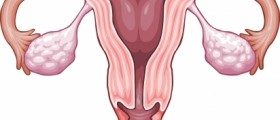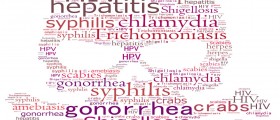
Chlamydia is a bacterial infection that can be transmitted through sexual contact. This sexually transmitted disease (STD) is more common in women than in men. Chlamydia is often asymptomatic which promotes spreading of the infection.
Chlamydia in Women
Chlamydia infection is caused by the bacterium Chlamydia trachomatis. Chlamydia causes majority of genital disease and can be contracted during unprotected sexual intercourse with an infected person. A pregnant woman infected by Chlamydia can pass the infection to her newborn during vaginal childbirth.
In both men and women the disease may spread to the upper genital tract leading to pelvic inflammatory disease in women and epididymis disease in men. Chlamydia infection can also lead to blindness. According to the World Health Organization (WHO), Chlamydia was the cause of 15% blindness in 1995 worldwide but this was reduced to 3.6% in 2002.
Symptoms of Chlamydia in Women
Chlamydia disease is often referred to as “silent disease” because it usually does not cause any symptoms. Due to that, the infection often remains undiagnosed and untreated which may over time lead to pelvic inflammatory disease (PID). Furthermore, pelvic inflammatory disease can cause serious complications like ectopic pregnancy, chronic pelvic pain and problems with fertility.
In about 65% of the affected women, Chlamydia disease is asymptomatic and undetected. Women who do have symptoms of Chlamydia commonly experience frequent and urgent need to urinate, increase in vaginal discharge, abdominal pain, pain during intercourse, bleeding after intercourse and fever.
Complications of Chlamydia in women include reactive arthritis, inflammation of the cervix (cervicitis), blindness and other conditions. In babies of the infected mothers, Chlamydia can cause premature birth, inflammation of the conjunctiva (conjunctivitis) and pneumonia. Pelvic inflammatory disease caused by Chlamydia occurs when the infection spreads to the fallopian tubes. PID causes symptoms such as abdominal pain and cramping, fever and painful sexual intercourse.
Diagnosis and Treatment for Chlamydia in Women
Chlamydia can be diagnosed with the help of analysis of a sample collected swabbing the cervix during an examination. There are also newer and cheaper diagnostic tests now available that involve analysis of urine and vaginal swabs collected by the patient.
Chlamydia infection is treated with oral antibiotics. Most commonly used antibiotics for symptoms of Chlamydia include azithromycin or doxycycline. Azithromycin is given in a single dose of 1 gm, while doxycycline has to be used in a dose of 100 mg twice a day for seven days. By using condoms during intercourse Chlamydia infection and other sexually transmitted disease can be avoided.

















Your thoughts on this
Loading...